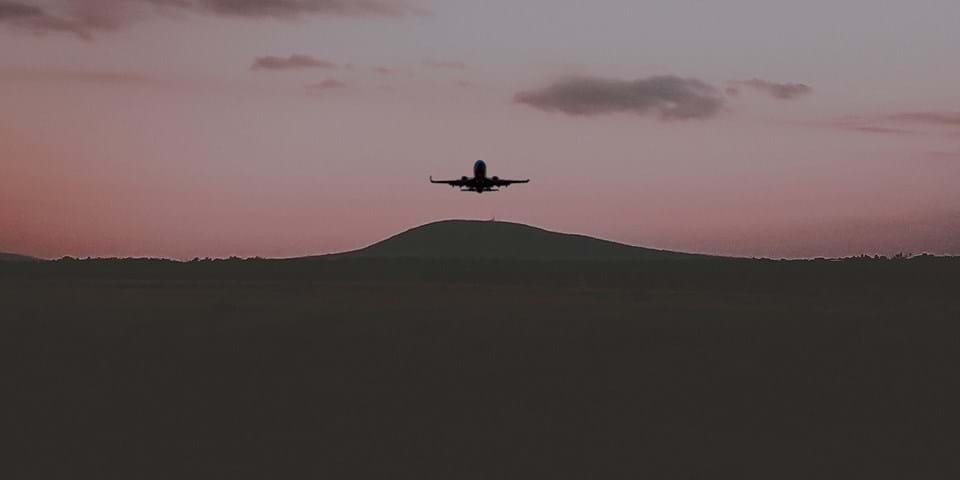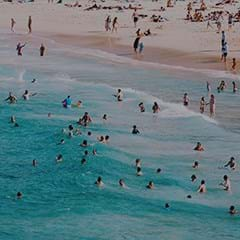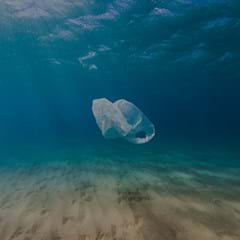Svalbardi iceberg water is harvested from 4000-year-old Norwegian icebergs – if you’re liquid enough (financially speaking) you can buy a bottle with an accompanying “gift tube” online for €69.96 ($US74.00), or a two-pack with two gift tubes for €129.90 ($US138.00). Svalbardi is among the most exclusive drinking waters currently available. Apparently, it tastes like water.
It was only a matter of time before water became a status symbol. Over the last two decades, bottled water has become the fastest growing drinks segment in the world, with sales now 100 times higher than they were in 1980. The global market is estimated to have increased nine percent annually in recent years and is expected to reach $280 billion by 2020.
Chlorination made drinking water safe for the masses about a century ago, an advance that has saved millions of lives. But what we were once so grateful for we now take for granted, with many of us turning our backs on the tap. What’s going on?
Bottled water tastes better than tap water, doesn’t it?
In his book, Drinking Water, James Salzman argues the modern bottled water industry can be traced back to Perrier (owned by Nestlé). Whether Perrier’s success can be put down to its taste, said to derive from its natural source, or a very expensive advertising campaign involving the seductive baritone voice of Orson Welles remains a moot point.
Salzman says Europeans might have palates refined enough to tell the difference between different mineral waters, but a number of studies involving British and American participants have shown most people can’t. (Europeans are apparently bewildered at the way Americans fill their water glasses with ice – blocks of frozen tap water that melt – which they say interferes with the original taste.)
Either way, most bottled water sold in the US and UK is sourced from a tap rather than a spring or well. It is then repurposed and rebranded as something “purer”. Companies use a process called “reverse osmosis“; they take the water, run it through a complex purification process, then add minerals back in (known in industry slang as “Pixie Dust”). In short, bottled water is often highly processed tap water.
Better bottled water than a sugary soft drink, right?
Of course, and in 2016 sales of bottled water overtook sales of sugary soft drinks in the US for the first time. This shift from soft drink to bottled water suggests people are “rehydrating” without putting themselves at risk of diabetes. The bottled water industry is at pains to suggest it’s providing a kind of public health service – that it’s not pitting bottled water against tap water, but bottled water against soft drinks.
Many disagree. In his book, Bottled & Sold, Peter Gleick points to numerous examples of the bottled water industry subtly or overtly undermining public confidence in tap water. He also points out that, at least in the US, tap water is subject to more regulatory checks than bottled water.
There have been some unfortunate instances of tap water contamination, such as the crisis that began in 2014 when the town of Flint, Michigan, changed its water source. (Officials failed to apply corrosion inhibitors to its drinking water, causing lead from aging pipes to leach into the water supply.) That was a very public disaster, but such instances are rare. Rather than turning to bottled water, critics argue, we should be ensuring public water supplies are safe.
Where have all the drinking fountains gone?
Not long ago we were able to quench our thirst at public water fountains, but these are rapidly vanishing. Gleik describes a notorious example of the demise of the public water fountain (and the commodification of water) when the University of Central Florida opened its new football stadium in 2007. The $54 million stadium, built to accommodate over 46,000 people, had no drinking fountains. On opening night, the only water available for overheated fans was in $3 bottles – which ran out before the match ended. Eighteen people were taken to hospital and another 60 were treated for heat-related illnesses.
“If any movement away from bottled water is going to succeed, there must be good, safe and conveniently available alternatives,” writes Gleick. “The irony is that the more bottled water we buy, the more invested in it we become and the more susceptible we become to industry efforts to convince customers that bottled water is not a luxury, but a necessity.”
But what about recycling?
The bottled water industry argues that water bottles (that is, polyethylene terephthalate, or PET, bottles) are 100 percent recyclable. The question is, how many are?
Estimates vary, depending on country or state, and who is providing the figures. But Gleick says 75 percent of US water bottles end up in the nation’s landfills or are tossed aside as litter.
In Ontario, Nestle estimates about 70-75 percent of water bottles are recycled, but the Ottawa-based Polaris Institute, a non-profit organization that “challenges the influence of corporations on government and public policy,” estimates only 14 percent of them are. The group Environmental Defence said up to one billion plastic bottles (that is, all plastic bottles other than just water bottles) don’t get recycled in Ontario each year.
According to figures released in 2016 by Recycle Now (a UK campaign group funded by the government’s waste advisory group, Wrap), UK households only recycle half of the plastic bottles they use. Again, these figures include all plastic bottles, but their estimates indicate that an average of 35.8 million plastic bottles are used every day by UK households, but only 19.8m are recycled each day.
While the figures might be disputed, there is no denying that plastic water bottles (along with plastic waste in general) are ending up in landfill and our oceans. We might like to think they’ll all be reconfigured as jerseys or shoes or salad bowls, but billions of them aren’t.
In the meantime, the ten best things we can do as individuals are:
- Take a blind taste test and see if you can really tell the difference between tap and bottled water
- Try to drink tap water whenever you can
- Install a water filter if you find the tap water taste too strong
- Refill bottles rather than buy new ones
- Always recycle plastic and glass
- Invest in a home soda maker for carbonated water – you’ll save money, too!
- Complain in restaurants or movie theatres if they only offer bottled water
- If it doesn’t have one already, lobby your workplace for a recycling scheme
- Lobby your local authority for more public drinking fountains
- Investigate what is really happening to your recycled waste, and lobby for improvements
If you want more health and fitness inspiration simply sign up to Fit Planet and get the freshest insights and advice straight to your inbox.







